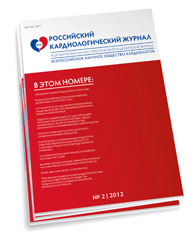URIs, Antibiotics Affect Warfarin
Having an acute upper respiratory tract infection -- with or without treatment with an antibiotic -- may be associated with excessive anti-coagulation in patients taking warfarin, a retrospective study showed, but the absolute risk of harm was low.
After accounting for other factors, the presence of a respiratory infection untreated by an antibiotic, as well as exposure to an antibiotic, were both associated with more than twice the likelihood of having an INR reading of 5.0 or higher (ORs 2.46 and 2.12, respectively), according to Nathan Clark, PharmD, of Kaiser Permanente Colorado in Aurora, and colleagues.
Excessive anti-coagulation was significantly more likely to occur with antibiotics that interfere with warfarin metabolism, such as metronidazole and trimethoprim-sulfamethoxazole, the researchers reported online in JAMA Internal Medicine.
They noted, however, that "most patients with previously stable warfarin therapy will not experience clinically relevant increases in INR following antibiotic exposure or acute upper respiratory tract infection."
That point is important to clinicians because it indicates "that we should not lower warfarin dosages preemptively," Mitchell Katz, MD, director of the Los Angeles County Department of Health Services, wrote in an accompanying editor's note.
"On the other hand, we can take from this study that patients with respiratory tract illness, especially those receiving an antibiotic that interferes with warfarin metabolism ... are at higher risk for excessive anti-coagulation and should have additional INR monitoring," wrote Katz, who is a deputy editor of the journal.
A major difficulty with using warfarin is the number of interactions it has with other drugs, the investigators noted. Antibiotics are of particular concern, but the impact of these interactions in a real-world population and the suspected influence of the underlying illness requiring the antibiotic have not been well studied.
To explore the issue, Clark and colleagues examined the records of 12,006 patients treated with warfarin through Kaiser Permanente Colorado's integrated healthcare delivery system from January 2005 through March 2011. About half (48.8%) were placed in the antibiotic exposure group (antibiotic group), 46.5% were placed in the stable warfarin group (the stable controls), and 4.7% were placed in the group with an upper respiratory tract infection that was not treated with an antibiotic (the sick controls).
The most common indication for warfarin was atrial fibrillation (44.4%), followed by venous thromboembolism (31.8%).
The percentage of patients who had an INR of 5 or higher within 30 days of the exposure was 3.2% in the antibiotic group, 2.6% in the sick controls, and 1.2% in the stable controls. The differences between the first two groups and the last were significant at P<0.017.
In addition, the percentage of patients with a follow-up INR higher than 3.5 -- which would typically trigger a change in warfarin dose in patients taking antibiotics was significantly higher in the antibiotic and sick control groups (13.5% and 15.1%, respectively) compared with the stable controls (9.2%).
But because there were no differences between the groups in rates of clinically relevant bleeding, thromboembolic outcomes, or all-cause mortality and most patients did not have elevated INRs, the researchers concluded "that the absolute risk of harm associated with co-prescribing antibiotic and warfarin therapy is low."
They acknowledged that the study was limited by the use of diagnostic codes to identify clinical outcomes, which could have resulted in underestimation of those events, by between-group differences in several baseline characteristics, and by the lack of information on the types of infection in the antibiotic group.
Source: www.medpagetoday.com






